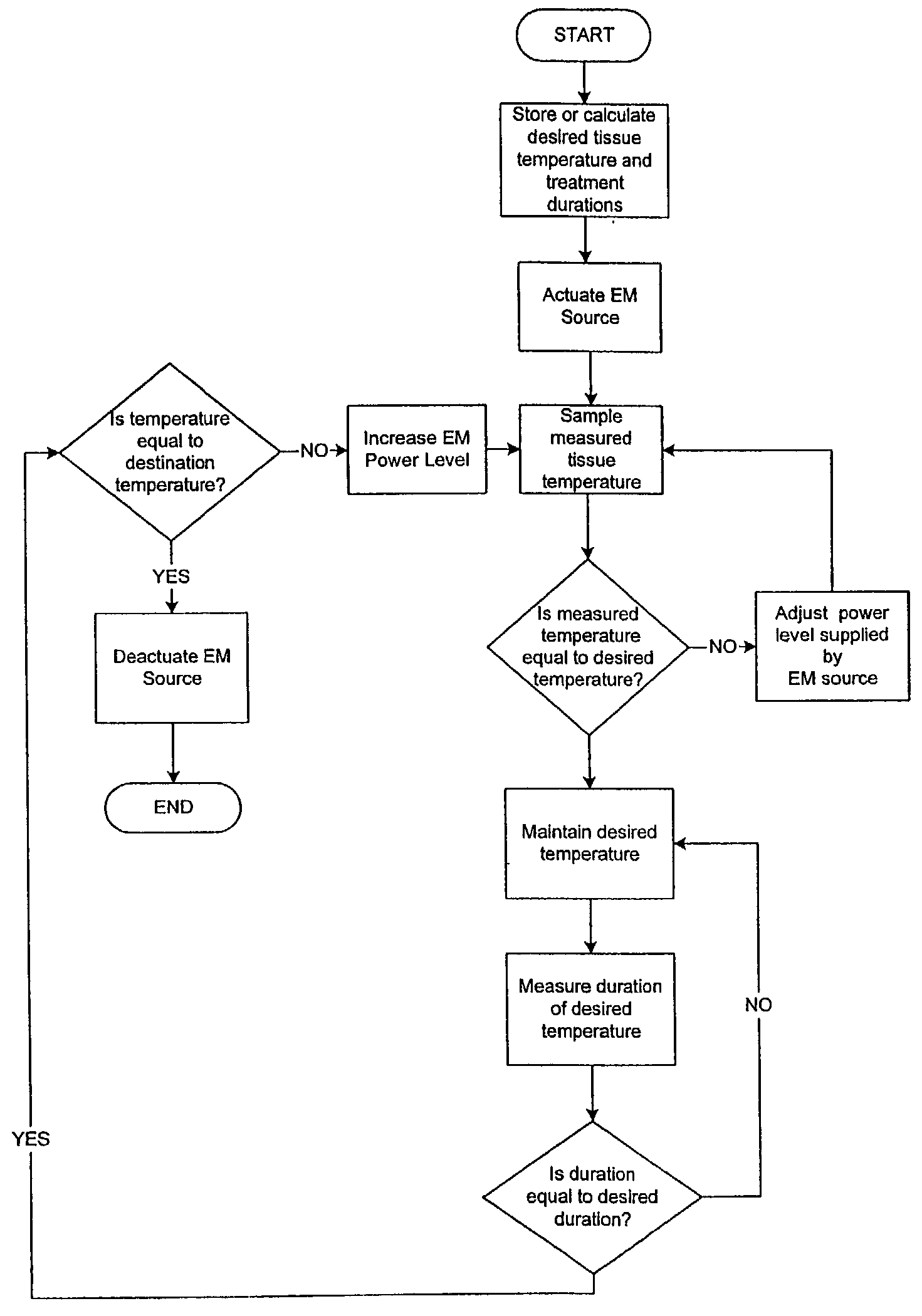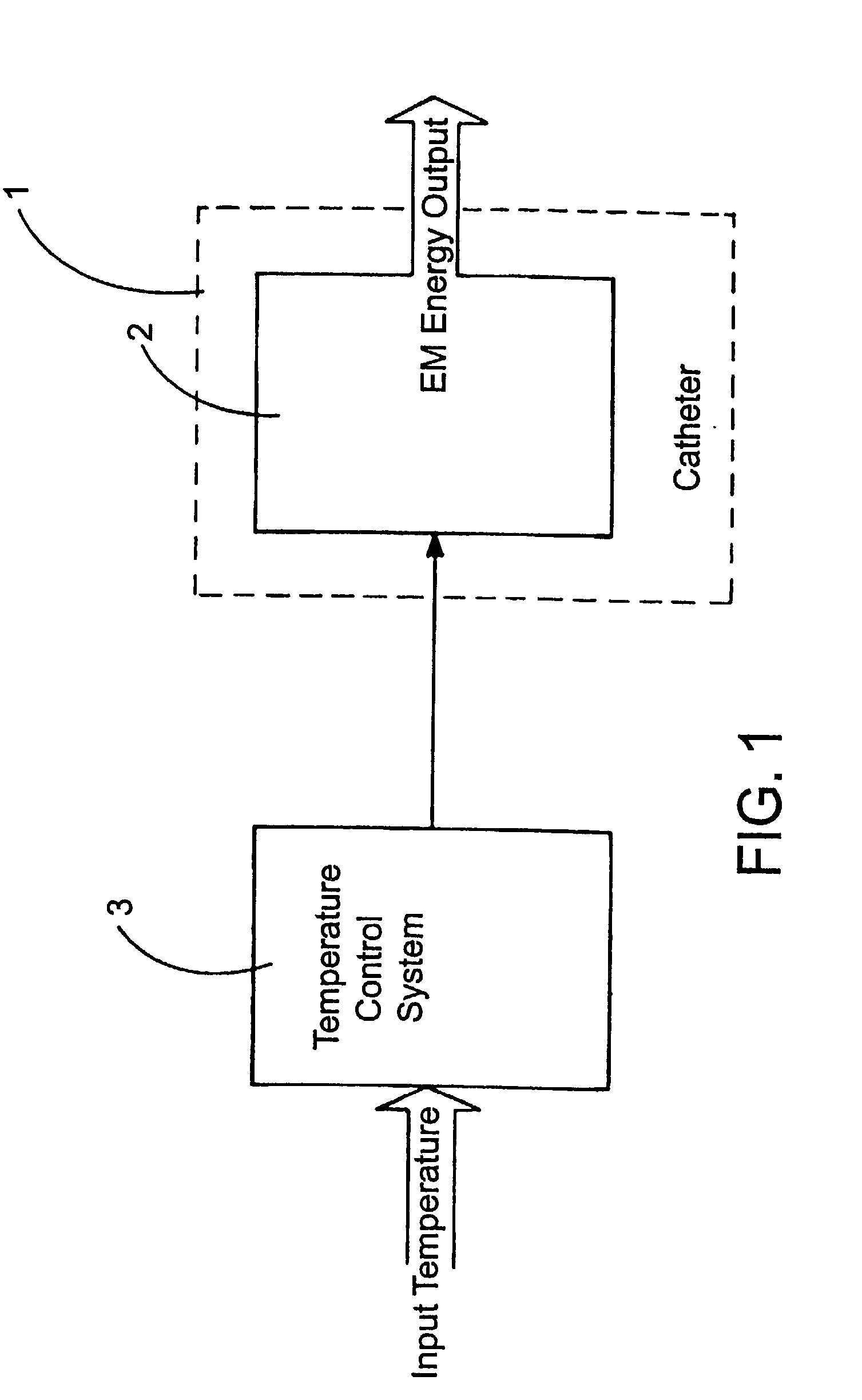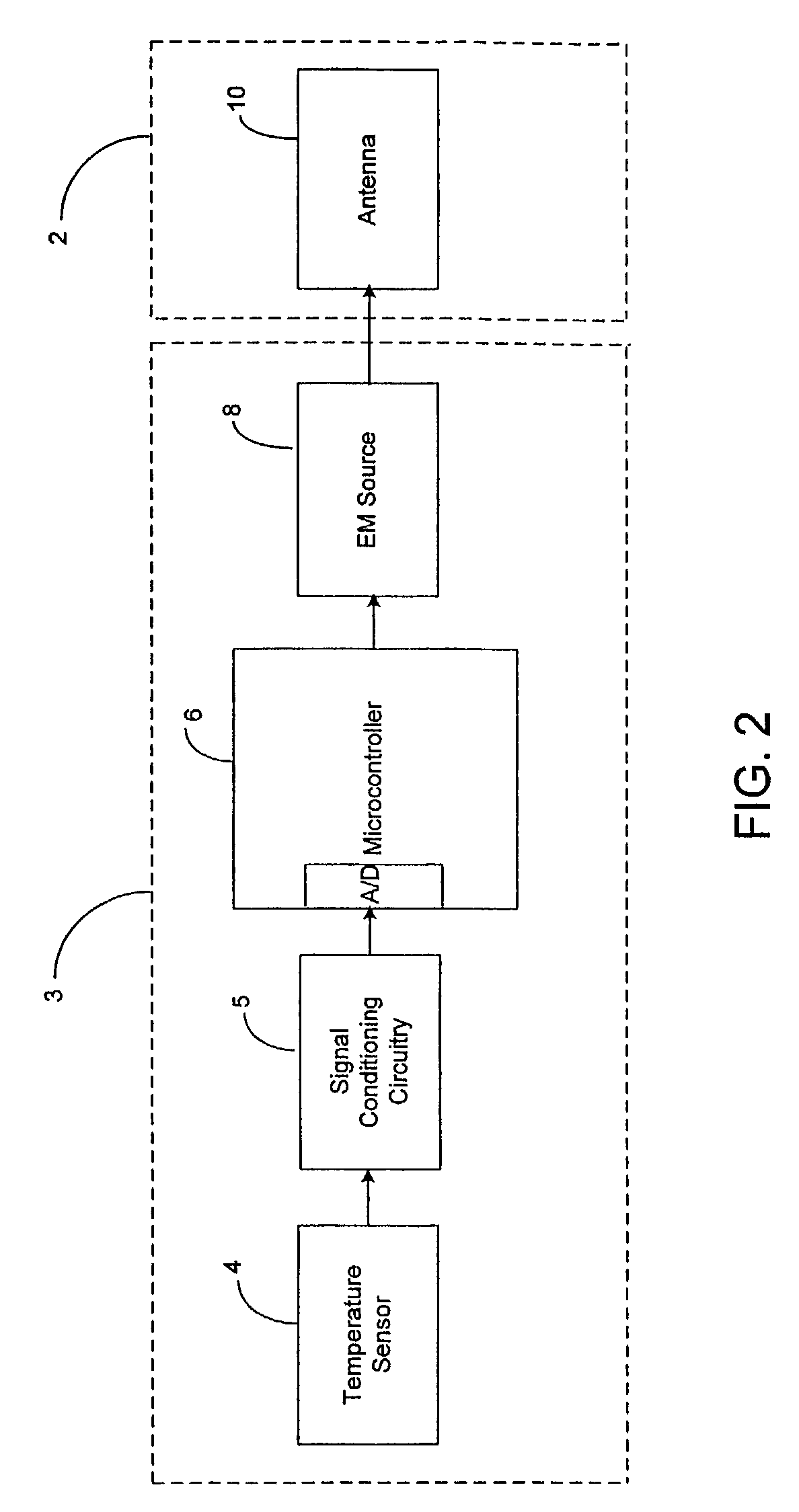Therapeutic prostatic thermotherapy
- Summary
- Abstract
- Description
- Claims
- Application Information
AI Technical Summary
Benefits of technology
Problems solved by technology
Method used
Image
Examples
Embodiment Construction
[0022]The present invention provides a method of heat treating a patient's prostate tissue and devices, programs, and systems useful in practicing the present inventive method.
[0023]Surprisingly, it has now been found that the maximum urethral temperature that can be tolerated by patients to whom narcotic analgesics or general anesthesia have not been administered exceeds the previously art-accepted maximum of 45° C.–47° C., under selected conditions. It has also now been found that the side-effects which have been reported to accompany high temperature treatment of the prostate are substantially reduced by use of the method of the present invention when the temperature is kept below about 57° C. Moreover, it has been surprisingly discovered that preservation of the prostatic urethra is not an important parameter of the thermotherapy of the prostate. On the contrary, the urethra and the urethrally proximal portions of the prostate are the tissues in which heating is desired in the p...
PUM
 Login to View More
Login to View More Abstract
Description
Claims
Application Information
 Login to View More
Login to View More - R&D
- Intellectual Property
- Life Sciences
- Materials
- Tech Scout
- Unparalleled Data Quality
- Higher Quality Content
- 60% Fewer Hallucinations
Browse by: Latest US Patents, China's latest patents, Technical Efficacy Thesaurus, Application Domain, Technology Topic, Popular Technical Reports.
© 2025 PatSnap. All rights reserved.Legal|Privacy policy|Modern Slavery Act Transparency Statement|Sitemap|About US| Contact US: help@patsnap.com



